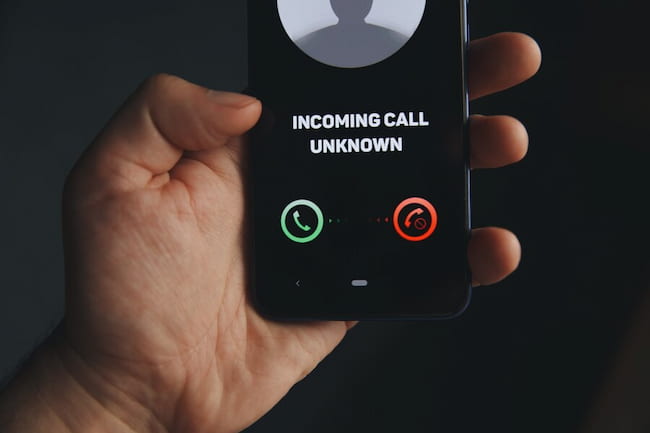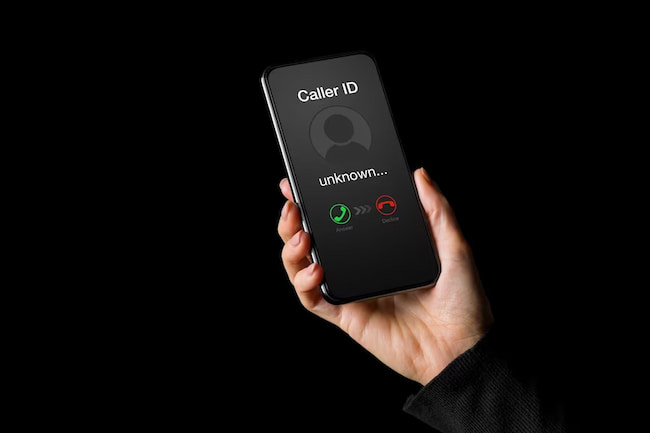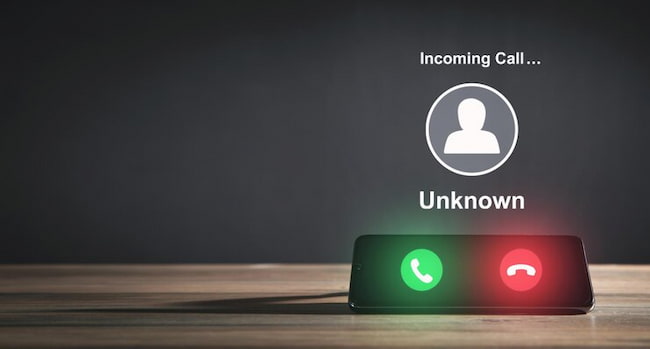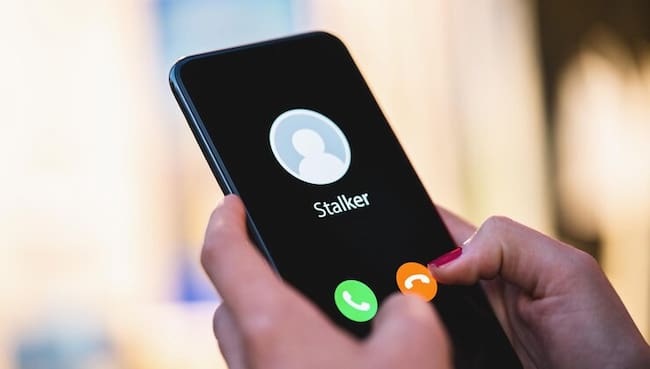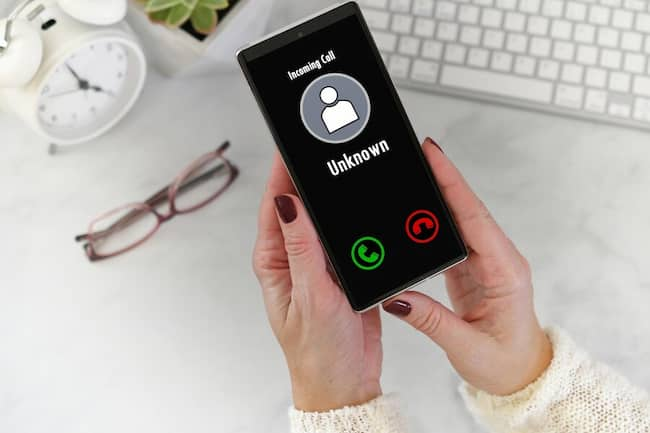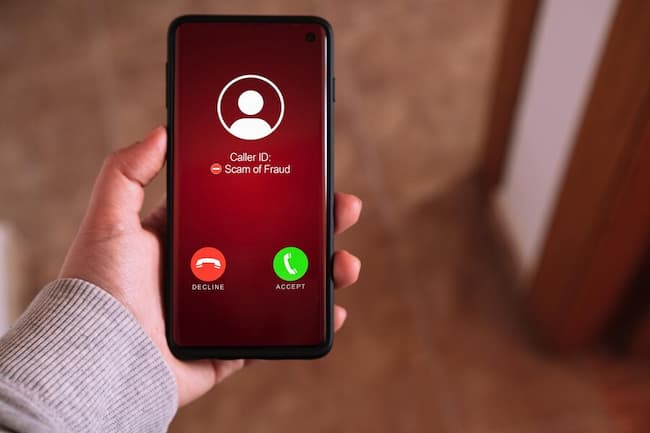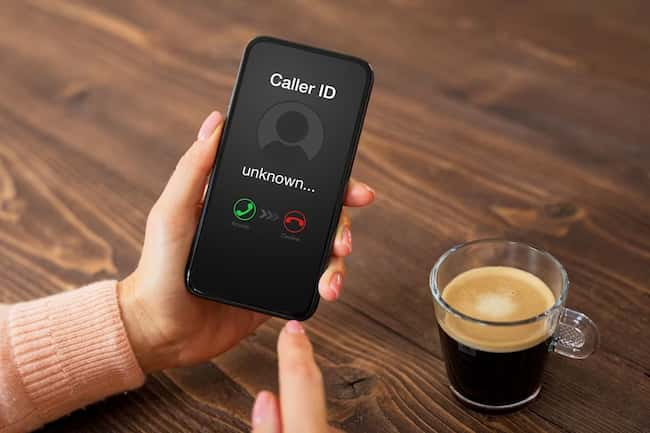Unidentified incoming calls can be a nuisance, but fear not, as we delve into understanding the problem of unknown callers.
Discover the importance of finding out these mysterious caller’s numbers and gain insights on how to handle such situations.
Stay tuned to uncover effective strategies and valuable information to put an end to the mystery behind those anonymous calls.
Key Takeaway:
- Tracing unknown callers can be done using various methods, including utilizing phone service provider tools and features, utilizing third-party apps and services, and exploring alternative methods.
- When tracing unknown callers, it is important to consider the potential limitations and challenges involved, such as hidden numbers, caller ID spoofing, and dealing with scam calls.
- Privacy concerns and legal regulations should be taken into account when tracing unknown callers, ensuring the protection of personal information and understanding the implications of anti-robocall laws.
https://www.youtube.com/watch?v=_9iCWdnxwMo
Understanding the problem of unknown callers
Unknown callers can be a real issue in our digital age, where communication is key. Motives behind these calls can vary, from pranks to harassment or even scams.
To address this problem and protect oneself, it’s important to understand the risks.
The daily routine, privacy and finances could all be affected. Knowing who’s calling is essential to take appropriate action, like blocking their number or reporting them.
Fortunately, there are ways to trace unknown callers. Phone service providers offer tools and features to block calls, as well as tracing techniques and services.
Third-party apps and services, such as reverse phone lookup, can help too. Search engines and public access sites are also worth considering.
However, privacy and legal regulations need to be considered. Respect for individuals’ privacy rights is vital, and the anti-robocall law should be taken into account.
Importance of finding out unknown caller’s number
Discovering the phone number of an unknown caller is vital. In today’s digital age, communication is mostly done via mobile phones.
Calls from unidentified numbers can result in bad experiences or threats. Knowing the number of an unknown caller lets individuals make informed decisions about if they should answer the call.
Revealing the caller’s number is essential for several reasons:
- It helps stop scams and fraudulent activities. Scam callers target people to con them financially. Tracing the caller’s number lets people identify potential scams and not become victims.
- Additionally, knowing who the caller is helps with personal safety. Anonymous callers could be dangerous. Finding out their identity through their phone number lets people take protective measures and report any threats.
- Finding out an unknown caller’s number also aids community safety. Reporting suspicious or harassing calls helps law enforcement and telecommunications providers take action against those misusing phone services for illegal purposes. This helps create a safer environment and discourages malicious individuals.
The importance of understanding the number of an unknown caller is important due to the rise of scam calls and other forms of harassment through phone communication.
It helps with personal safety and stopping individuals from becoming victims of fraud or harm. People must use the methods and services available to trace unknown callers.
Methods to Trace Unknown Callers
Methods to Trace Unknown Callers: Unravel the mystery behind unknown callers with effective strategies.
Discover how phone service provider tools, third-party apps, and alternative methods can assist in tracing unknown callers.
Using phone service provider tools and features
Phone service providers offer various tools for tracing unknown callers. These are useful for blocking unwanted calls and enhancing security and privacy.
For example, an iPhone user can block unknown numbers which are not in their contacts list.
Furthermore, phone companies offer tracing techniques that use data algorithms and advanced technology. Third-party apps and services also provide extra features for tracing.
Reverse phone lookup services allow users to enter an unknown number and get information about the caller. Free phone lookup services also exist, offering basic info without any charge.
However, there may be limitations and challenges. Hidden numbers and caller ID spoofing make it hard to trace callers accurately.
Plus, there are privacy and legal concerns to address. Users must protect their personal info during the tracing process.
Blocking unknown calls on iPhone
Block Unknown Calls on iPhone Easily!
iPhone users, take advantage of the features provided by your phone service provider to block calls from unidentified numbers. Keep unwanted interruptions and potential scams at bay with this simple 5-step guide:
- Open the “Phone” app on your iPhone.
- Go to the “Recents” tab.
- Locate the unknown caller you want to block.
- Tap on the (i) icon next to the number.
- Scroll down and tap “Block this Caller”.
This will help you protect yourself from suspicious or unwanted sources. However, there may be difficulties in tracing all unknown numbers.
Some callers may hide their numbers or use caller ID spoofing techniques to disguise their identity.
If this is the case, you may need alternative methods or third-party apps for further investigation.
To ensure privacy and legal compliance, be careful when providing personal details online or over the phone. Also, understand how third-party services use your data.
Tracing techniques and services provided by phone companies
Phone companies provide tracing techniques and services to help identify unknown callers. These are useful for phone users’ security and privacy.
- Phone providers offer tools and features to block unknown calls on iPhones.
- They also offer tracing techniques that help identify unknown callers through their network.
Alternative methods are also available. Search engines and public access sites can provide more info about unknown numbers. Reporting unknown callers adds to community safety.
Tracing unknown callers has its challenges. Hidden numbers and caller ID spoofing can make it difficult to find the true source of a call. Scam calls need extra vigilance and caution.
Privacy and legal regulations must be considered. Personal info must be protected. Anti-robocall law implications must be understood.
Tracing services and apps must be assessed for accuracy, availability, and reliability.
Traced details help maintain safety and privacy. By balancing privacy and info needs, individuals can make informed decisions.
Phone companies will likely improve tracing services as technology advances. New malicious caller challenges will be addressed.
Utilizing third-party apps and services
Put an end to the mystery of unknown callers with just a few clicks! Utilizing third-party apps and services, users can enter an unknown phone number and obtain information about the caller, such as their name, address, and other relevant details.
Some third-party apps and websites offer free phone lookup services, allowing users to search for information on unknown callers without any cost.
Alternative methods can also be explored. Search engines and public access sites allow individuals to conduct a search to find information about unknown callers.
Reporting unknown callers and numbers to relevant authorities or online databases can help contribute to the safety of the community.
It’s important to note certain considerations when utilizing third-party apps and services. Hidden numbers and caller ID spoofing can limit tracing unknown callers.
Additionally, dealing with scam calls requires caution and understanding of anti-robocall laws.
Privacy concerns and legal regulations must also be taken into account, including protecting personal information during the tracing process.
Reverse phone lookup services
Efficiently find out who’s calling? Reverse phone lookup services allow users to identify unknown callers quickly.
Plus, these services often provide more contact details like addresses or emails.
Knowing who’s on the other end of the line can help with peace of mind and safety. In order to find out an unknown caller’s number, you can refer to How to Find Out an Unknown Caller’s Number.
It can even protect against scams and fraud as it reveals the true identity.
Using these services can also help the community stay safe by reporting suspicious callers and numbers.
However, it’s important to note that certain numbers may be unlisted or blocked, so it may not always be possible to retrieve the info. Plus, privacy and legal regulations should be taken into account.
Free phone lookup services
Phone number search: Free phone lookup services offer an easy way to track down unknown callers.
Users just enter the phone number and get instant results. This gives essential info on the caller’s identity.
Caller identification: These services use databases of public info to match phone numbers with individuals or businesses.
By comparing the number with existing records, free phone lookup services can give helpful info on who is behind the unknown call.
Reverse phone lookup: One of the key features of free phone lookup services is reverse searches.
This means users can enter a name or address and get corresponding phone numbers linked to that person or place.
Verified data sources: Free phone lookup services use data sources that are constantly updated for accurate results.
By accessing trustworthy data sets, these services give reliable info that users can trust when tracing unknown callers.
Accessibility and convenience: Free phone lookup services are available online, so users can access them from anywhere at any time.
This makes it easy to find out who is behind unknown calls without needing technical knowledge or special equipment.
User community contributions: Free phone lookup services often ask users to report unknown callers they have encountered.
This helps build a big database of known spam, telemarketing, and scam numbers, making trace results more accurate.
Although free phone lookup services are useful, there may be limits in terms of available info or accuracy.
Plus, privacy concerns and potential legal restrictions should be considered when using these services.
But, the convenience and accessibility of free phone lookup services make them a great tool for identifying unknown callers and feeling secure.
So, choose a free phone lookup service that suits your needs and get tracing today! Who needs Sherlock when you can use search engines and public access sites to play detective and locate those elusive unknown callers?
Exploring alternative methods to trace unknown callers
Search engines and public access sites: Conducting online searches with unknown caller details, like their number, can uncover info. Using these sites and search engines can give insights into the caller.
Report unknown callers and numbers: Report suspicious callers and numbers to authorities or platforms fighting spam calls. This helps keep everyone safe.
Reverse phone lookup services: Use third-party apps or sites to look up unknown callers. Input a number and get info about the owner.
Free phone lookup services: Platforms and sites offer free phone lookup services. Search without fees or subscriptions for quick answers.
Limitations, though: Hidden numbers or spoofing can make it hard to find the true identity. Also, consider privacy and legal issues.
Solving mysterious calls is like a puzzle, but creepier and no detective needed!
Using search engines and public access sites
Search engines and public access sites can be a great way to trace unknown callers.
You can also use social media platforms such as Facebook or LinkedIn to look for their phone number or any other related info.
An extra option is to explore online directories. These could have details about businesses and people connected to the number.
But there might be some limitations. The caller may have blocked their info from being made public. Also, some numbers may not have much digital data, especially if they’re new or rarely used.
Using search engines and public access sites can be helpful. They let you search for info from many online sources.
But you should check the accuracy of the info before taking any action. So next time you want to report an unknown caller, don’t forget to make use of search engines and public access sites.
Reporting unknown callers and numbers
Unknown callers are becoming more and more common, so it’s crucial to have a system in place for reporting them. Here are 5 steps to do it right:
- Collect info: Note the date, time, duration, and anything else that stands out about the caller’s voice or behavior. This will help authorities.
- Contact police: Reach out to your local police or non-emergency helpline. Provide all the details you noted.
- Notify your phone service provider: Tell them about the unknown caller and provide any info they need.
- Share with reverse phone lookup services: If you used a reverse phone lookup app, share the info. It will help improve their database.
- Help the community: Join forums or platforms dedicated to reporting scam calls and numbers. Share your experience and help others avoid danger.
When reporting unknown callers, consider unique details specific to each case. Hidden numbers and caller ID spoofing can make it harder to identify and report them.
Privacy must also be kept in mind when providing personal info. Knowing anti-robocall laws is important for decision-making.
Tracing unknown callers can be fun, but be careful! You might find more than just a wrong number.
Considerations and Limitations
In the world of unknown caller tracing, it’s important to be aware of the considerations and limitations.
We will explore the potential challenges faced in tracing unknown callers, delve into the privacy concerns and legal regulations that come into play, and assess the accuracy, availability, and reliability of tracing services and apps.
So, let’s navigate through these aspects to better understand the intricacies of finding out an unknown caller’s number.
Potential limitations and challenges in tracing unknown callers
Tracing unknown callers can be tricky. Obstacles like hidden numbers and caller ID spoofing can hinder the identification of them. Fraudsters often use these tactics to deceive and extract information.
Privacy concerns and legal regulations also play a role. Personal data must be protected while still ensuring that necessary measures are taken.
Accuracy, availability, and reliability of tracing services and apps must be assessed. Different factors can affect their effectiveness. Considering these variables is key in choosing an appropriate tracing method.
Efforts should still be made to find out an unknown caller’s number due to its importance in safety and security.
By overcoming these hurdles, individuals can protect themselves from potential threats posed by anonymous calls. Unmasking hidden numbers and caller ID spoofing becomes essential.
Hidden numbers and caller ID spoofing
Unknown callers may conceal their numbers to dodge detection. Caller ID spoofing alters displayed caller info, making it appear like the call is from a different number or location.
Hiding numbers and caller ID spoofing makes it tough for those receiving the calls to find the source or know the true caller. These tactics are used by scammers and bad people who want to deceive or cheat innocent victims.
Plus, hidden numbers and caller ID spoofing cause problems for law enforcement trying to investigate illegal activities done on the phone.
Resolving this needs tech, and cooperation between telco, law enforcement, and regulatory bodies.
Dealing with scam calls
Scam calls are a big issue today, so it’s essential to understand how to handle them.
These scammers often pretend to be government officials or financial institutions to trick people into giving out personal info or money.
To protect yourself, you need to know how to identify and manage these scam calls.
When you get one, don’t give away any personal or financial details over the phone. Phone companies have tools and features to help with this.
For example, the “Silence Unknown Callers” feature on iPhones blocks scam calls from getting through.
You can also use third-party apps and services for this. Reverse phone lookup services let you search for info on unknown callers with their phone numbers.
Free services are an option, but paid ones usually offer better capabilities. There are other ways to trace unknown callers, too.
You can use search engines and public access sites to find info on a specific number or caller.
You can also report unknown callers and their numbers through law enforcement platforms or organizations that fight fraud.
To deal with scam calls, keep these tips in mind: never engage with the scammers or give them info; and consider registering your number on the National Do Not Call Registry (if available).
By following these tips and using tools and services, you can keep yourself safe from scam calls. Stay aware and informed!
Privacy concerns and legal regulations
It’s essential to protect personal info when tracing, to avoid any unauthorized access or misuse.
Knowing the anti-robocall law can help individuals recognize their rights and battle unwanted robocalls that breach the law.
Before trusting a tracing service or app, evaluate its accuracy, availability, and reliability.
Be wary when using such services, considering potential limits and issues associated with tracing unknown callers.
This includes hidden numbers and caller ID spoofing that can conceal real caller identities. Scam calls are a major challenge as they frequently attempt to deceive victims with fraudulent tactics.
Balancing privacy worries and safety considerations can help reduce risks associated with these difficulties.
For instance, a person received multiple anonymous calls for no valid reason. Worried about their security and privacy, they used a third-party app to trace the unknown caller’s number.
This helped them discover the source of the calls, which turned out to be a persistent telemarketing firm.
With this info and the traced data, the individual was able to take further action, like alerting their phone service provider and the relevant authorities, thus helping protect their own safety and that of others in their community.
Protecting personal information during the tracing process
Tracing unknown callers? Worried about safeguarding personal data? It’s crucial to take measures to protect sensitive info from the wrong hands. Secure methods and procedures help stop unauthorized access or misuse.
Ensure privacy with encrypted systems and tools. Strict privacy protocols are a must. Plus, choose reliable tracing services and apps.
These must have top-notch security measures in place. Encrypted databases and secure servers? They play a big role in keeping traced info confidential.
When providing personal details, be careful. Share only necessary info with trusted sources.
Exercise caution when sharing data. This way you can navigate the tracing process while minimizing risks to your privacy.
To protect personal info during tracing, you need a strong commitment to privacy and security. Implement appropriate safeguards and choose reliable tracing services or apps.
Remember to be careful when sharing information. That’s how you can ensure your privacy is protected.
Knowing the anti-robocall law won’t stop the annoying calls. But you’ll know the legal jargon they’re breaking.
Understanding the anti-robocall law and its implications
Comprehending the anti-robocall law and its implications is key for tackling the problem of unwelcome automated calls.
These laws are put in place to manage and restrict robocalls, which are usually linked to fraudulent activity or telemarketing scams.
Understanding the anti-robocall law gives individuals the power to protect themselves from these intrusive and possibly hazardous calls.
The anti-robocall law covers regulations that control automatic dialing systems and prerecorded messages.
It sets out guidelines on when and how robocalls can be made, so they don’t get used for unlawful purposes or spam.
Also, this legal framework allows people to opt-out of getting such calls and enforces penalties on those who break the rules.
Realizing the consequences of the anti-robocall law is important for both phone service providers and customers.
Providers have to guarantee that they comply with these regulations by incorporating features like call blocking, caller ID authentication, and call filtering.
For users, understanding this law gives them the ability to take action against unwanted robocalls by reporting violations or lodging complaints with regulatory bodies.
It’s important to keep in mind that even though there are anti-robocall laws, there are still difficulties with enforcement.
People may try to hide their identity by means like caller ID spoofing or using hidden numbers.
This makes it hard to work out the real source of a robocall and hold the guilty parties accountable.
In spite of such challenges, the anti-robocall law is a vital tool in preventing unwanted automated calls.
It encourages privacy protection, consumer rights, and a safer communication environment for all users.
By being aware of these laws and their implications, individuals can make use of their rights and help to reduce the amount of robocall scams in society.
To sum it up, knowing the anti-robocall law and its implications is essential for combating unwelcome automated phone calls.
By being informed about these laws and the rights they provide, individuals can safeguard themselves and contribute to a safer communication environment.
Assessing the accuracy, availability, and reliability of tracing services and apps
Tracing services and apps are essential for caller identification, yet before using them, we must evaluate their accuracy, availability, and reliability.
Accuracy is key – it will determine how accurate the info about unknown callers is. We must make sure that these services are always available, no matter our location or time zone.
This guarantees that we can use the tracing services when needed. Reliability means that the provided info is up-to-date and dependable.
So, we can make informed decisions based on the traced info with certainty.
Additionally, user reviews and ratings can give us insight into accuracy, availability, and reliability.
By assessing user experiences, we can identify which tools are most effective in identifying unknown callers.
Also, we need to consider the reputation of the service providers or app developers – this can show us if we can trust the tracing service or app.
In summary, before relying on tracing services and apps to identify unknown callers, we must assess their accuracy, availability, and reliability.
We should take into account factors like accuracy, availability, reliability, user reviews, ratings, and provider reputation, so we can choose reliable tools that consistently provide accurate info, thus enhancing safety and privacy protection.
Conclusion
In the conclusion, we’ll consider the importance of finding out an unknown caller’s number and explore an overview of different tracing methods and their effectiveness.
We’ll navigate the challenges of balancing privacy and safety considerations while making informed decisions based on the traced information.
Additionally, we’ll discuss the significance of reporting unknown callers to contribute to the safety of the community.
Importance of finding out an unknown caller’s number
Identifying unknown callers holds great importance in the digital age. They could be a source of unwanted calls, harassment, or even scams. It’s essential to get their number to check their legitimacy and protect yourself.
By identifying them, you can make informed decisions on how to respond and take appropriate actions.
Phone service providers offer tools and features to block unknown calls on devices like iPhones.
They also provide tracing services that give you info about the origin of incoming calls. There are 3rd party apps too; they specialize in reverse phone lookup and offer paid/free options.
You can also use alternative methods – search engines or public access sites. These can yield information about the caller via online directories/social media profiles.
Reporting unknown callers helps you and the community stay safe from potential harm.
Tracing unknown callers has its limitations; hidden numbers or caller ID spoofing can prevent accurate identification.
Also, scam calls require caution and not revealing personal info. Privacy concerns may arise, so it’s important to protect your data and comply with legal regulations.
When trying to find out an unknown caller’s number, assess the accuracy, availability, and reliability of tracing services and apps.
They may vary in success rate depending on their databases/algorithms used for searching phone numbers. Evaluate their effectiveness before relying on the traced info.
Overview of different tracing methods and their effectiveness
Tracing unknown callers and their numbers is tricky. Different methods can be used to increase the chances of success.
A table could show the different methods available, such as phone service provider tools, third-party apps and services, and alternative methods.
| Phone Service Provider Tools and Features | Third-Party Apps and Services | Alternative Methods |
|---|---|---|
| Blocking calls on iPhone | Reverse phone lookup or free phone lookup apps and services | Using search engines and public access sites |
| Success rate can be evaluated by how well calls are blocked or accurate tracing information provided | Efficacy can be assessed based on user reviews, accuracy of results, and reliability | Effectiveness may depend on the availability of information and help from other users |
Additionally, reporting unknown callers and numbers can help with community safety. Finding the balance between privacy and safety is like walking a tightrope with Google Maps directions.
Balancing privacy and safety considerations
Maintaining a balance between privacy and safety is key when it comes to tracing unknown callers.
Both are important: protecting personal info and ensuring safety. To learn how to find out an unknown caller’s number, check out this guide.
Phone service provider tools and features can help with this. Blocking unknown calls on iPhone or using tracing techniques from phone companies offers info without sacrificing privacy.
Third-party apps and services such as reverse phone lookup services or free phone lookup services can also be helpful. These allow individuals to gather info on unknown callers without compromising privacy.
Search engines and public access sites can provide insights too. Reporting unknown callers and numbers can alert others to potential risks.
Challenges exist when tracing unknown callers, such as hidden numbers and caller ID spoofing. Scam calls are also hard to deal with, as scammers keep finding new ways to deceive.
Privacy concerns and legal regulations must be taken into consideration. It’s essential to protect personal info during the tracing process. Understand anti-robocall law and its implications for compliance.
When using tracing services and apps, assess accuracy, availability, reliability, and any privacy concerns they may pose.
Making informed decisions, based on traced info, helps strike a balance between privacy protection and safety.
The article ‘How to Find Out an Unknown Caller’s Number’ offers various tracing methods. Making informed decisions can be the difference between speaking to a lost love or joining a cult.
Making informed decisions based on traced information
Tracing methods provide valuable insights. They help individuals decide if engaging with unknown callers is safe or necessary.
Through tracing techniques, individuals can uncover details such as the caller’s location and history. They can also identify if the number is linked to scams or fraud.
Armed with this knowledge, individuals can choose to answer the call, block it, or report it. It goes beyond safety considerations.
Reporting unknown callers and sharing info can help create a safer environment for everyone.
By leveraging traced info, individuals can decide how best to handle unknown callers. The insights not only enhance safety but also enable proactive engagement in promoting community security.
Making informed decisions based on tracing empowers individuals to protect themselves and contribute towards a safer society.
Reporting unknown callers and contributing to the community’s safety
It is essential to report unknown callers to generate a database of suspicious numbers. This assists authorities and phone service providers in taking the necessary action against such people. Analyzing these numbers can lead to more efficient approaches to solve future problems.
Contributing to the community’s safety by reporting malicious activities encourages collective responsibility.
It can help save others from being scammed or any other malicious actions.
Plus, it educates people on the dangers of unidentified calls, raising their awareness and empowering them to protect themselves.
When reporting unknown callers, it is important to take into account privacy matters and adhere to legal regulations.
This ensures data confidentiality and compliance with anti-robocall laws. Contributing to the community’s safety is an important aspect to consider.
Some Facts About How to Find Out an Unknown Caller’s Number:
- ✅ Dialing *69 after a missed call from an unknown caller can trace their number, name, and address if listed in a public database. (Source: Team Research)
- ✅ Dialing *57 connects you with local law enforcement officials to track and act upon unwanted calls. (Source: Team Research)
- ✅ Contacting your phone service provider can provide you with the log of your incoming and outgoing calls, including the unmasked unknown caller’s number. (Source: Team Research)
- ✅ Installing apps like BeenVerified, Spokeo, TrapCall, or TrueCaller can track phone numbers and provide details about the caller. (Source: Team Research)
- ✅ iPhone users can use the Silence Unknown Callers feature to block unknown calls. (Source: Team Research)
FAQs about How To Find Out An Unknown Caller’S Number
1. How can I block spam callers or random marketing calls on my phone?
There are a few methods to block spam callers or random marketing calls on your phone. One option is to use the *69 feature, which allows you to trace the number of the last person who called you. Once you have the hidden phone number, you can block it on your phone to prevent further calls. Another option is to use third-party apps like TrapCall or Truecaller, which can help identify and block unknown or blocked numbers.
2. Are there any reliable methods to identify an unknown caller’s number?
Yes, there are several reliable methods to identify an unknown caller’s number. You can use call tracing services like *69 or *57 to trace the number of the unknown caller. Additionally, third-party apps like Number Finder or Truecaller can provide detailed information about unknown numbers. It is also possible to contact your phone service provider and inquire about anonymous caller ID options or their call log records.
3. How can I report who is calling me from an unknown number?
If you are receiving unwanted or harassing calls from an unknown number, you can report it to the appropriate authorities. The *57 feature can be used to report harassment from scam or spam callers, which will pass the information along to the police for further investigation. You can also report scam calls to the Federal Trade Commission (FTC) online. It is important to provide them with details such as the time and date of the call.
4. Is it possible to trace unknown numbers calling me?
Yes, it is possible to trace unknown numbers calling you. Methods like *69, *57, or using third-party apps can help trace the caller’s number. However, it is important to note that obtaining the caller’s information may require legal processes or assistance from your phone service provider. In instances of harassment or threats, it is advisable to involve local law enforcement.
5. What are the best apps for finding out an unknown caller’s number on an iPhone?
There are several apps available for finding out an unknown caller’s number on an iPhone. Some popular options include Truecaller, TrapCall, and Reverse Lookup. Truecaller can provide caller ID information, while TrapCall can reveal the number and Caller ID of anyone who has masked their number. Reverse Lookup allows you to run a free reverse search on a phone number.
6. Can I block outgoing Caller ID to keep my number private?
Yes, you can block outgoing Caller ID to keep your number private. Dialing *67 followed by the phone number you want to call will block your outgoing Caller ID. This can be useful when you do not want the recipient to see your phone number. However, it is important to note that some phone carriers may charge an additional fee for this service.
Table of Contents
